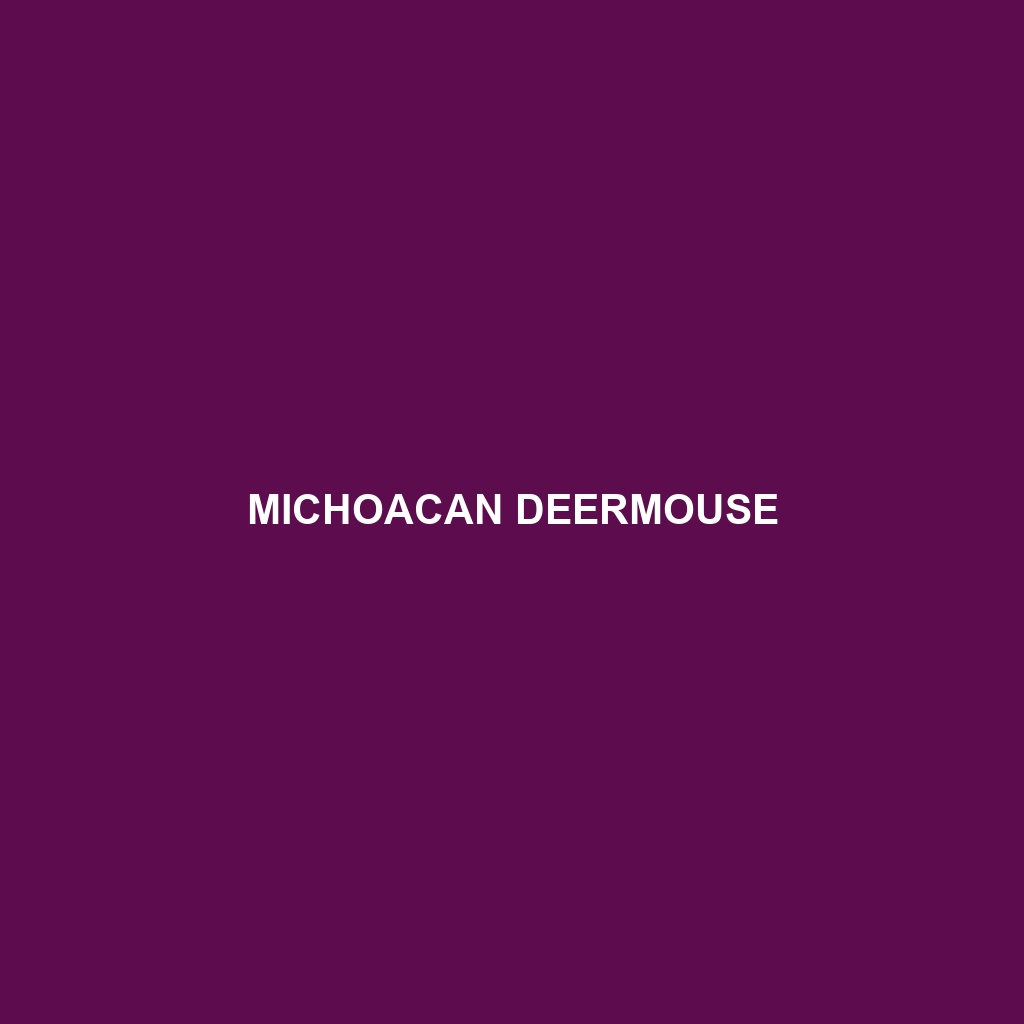Michoacan Deermouse
Common Name: Michoacan Deermouse
Scientific Name: Peromyscus michoacanus
Habitat
The Michoacan Deermouse is primarily found in the temperate rainforest and mountainous regions of **Michoacán**, Mexico. These small rodents prefer dense, moist environments that offer ample vegetation and shelter. They are often located in areas with rich undergrowth, such as oak and pine forests, where they can find food and avoid predators.
Physical Characteristics
Michoacan Deermice are characterized by their medium size, typically reaching lengths of about **8 to 10 inches** from head to tail. Their fur is a mix of **brown and gray**, with a lighter underbelly. One distinctive feature is their large, rounded ears and long, slender tails, which are often a bit longer than their bodies. This unique coloration and morphology help them blend into their forest environments.
Behavior
Generally nocturnal, the Michoacan Deermouse exhibits a range of **social behaviors**. They are known to create burrows in the ground where they sleep during the day, which helps in thermoregulation. During nighttime, they become quite active, foraging for food and establishing territories. Their **agility** and **curiosity** make them adept climbers, often seen navigating through trees and shrubs as part of their foraging behavior.
Diet
The diet of the Michoacan Deermouse primarily consists of **seeds, fruits, insects**, and nuts. This omnivorous diet allows them to adapt to various seasonal food sources. Their feeding habits play a crucial role in seed dispersal, influencing the vegetation of their habitat. Additionally, they are beneficial for controlling insect populations within their environment.
Reproduction
Michoacan Deermice typically reproduce during the warmer months, with breeding seasons occurring from **spring to early fall**. A female can have **up to five litters per year**, with each litter containing **2 to 6 offspring**. The young are born blind and hairless but are weaned within a few weeks, quickly developing independence as they adapt to their surroundings.
Conservation Status
The Michoacan Deermouse is currently classified as **vulnerable** due to habitat loss primarily caused by deforestation and urbanization. Conservation efforts are essential to protect their natural habitats and prevent further decline in their population.
Interesting Facts
One fascinating aspect of the Michoacan Deermouse is its ability to navigate complex environments. They possess an excellent memory that allows them to remember the locations of food sources and potential hiding spots. Moreover, their role in the ecosystem extends beyond their diet; they serve as prey for various larger predators, thereby maintaining the food chain.
Role in Ecosystem
In their ecosystem, Michoacan Deermice play a pivotal role as both **seed dispersers** and prey species. By consuming seeds and fruits, they help promote plant growth and genetic diversity. Additionally, they support the food web by serving as a food source for predators such as owls, snakes, and mammals, making their presence crucial for ecological balance.
